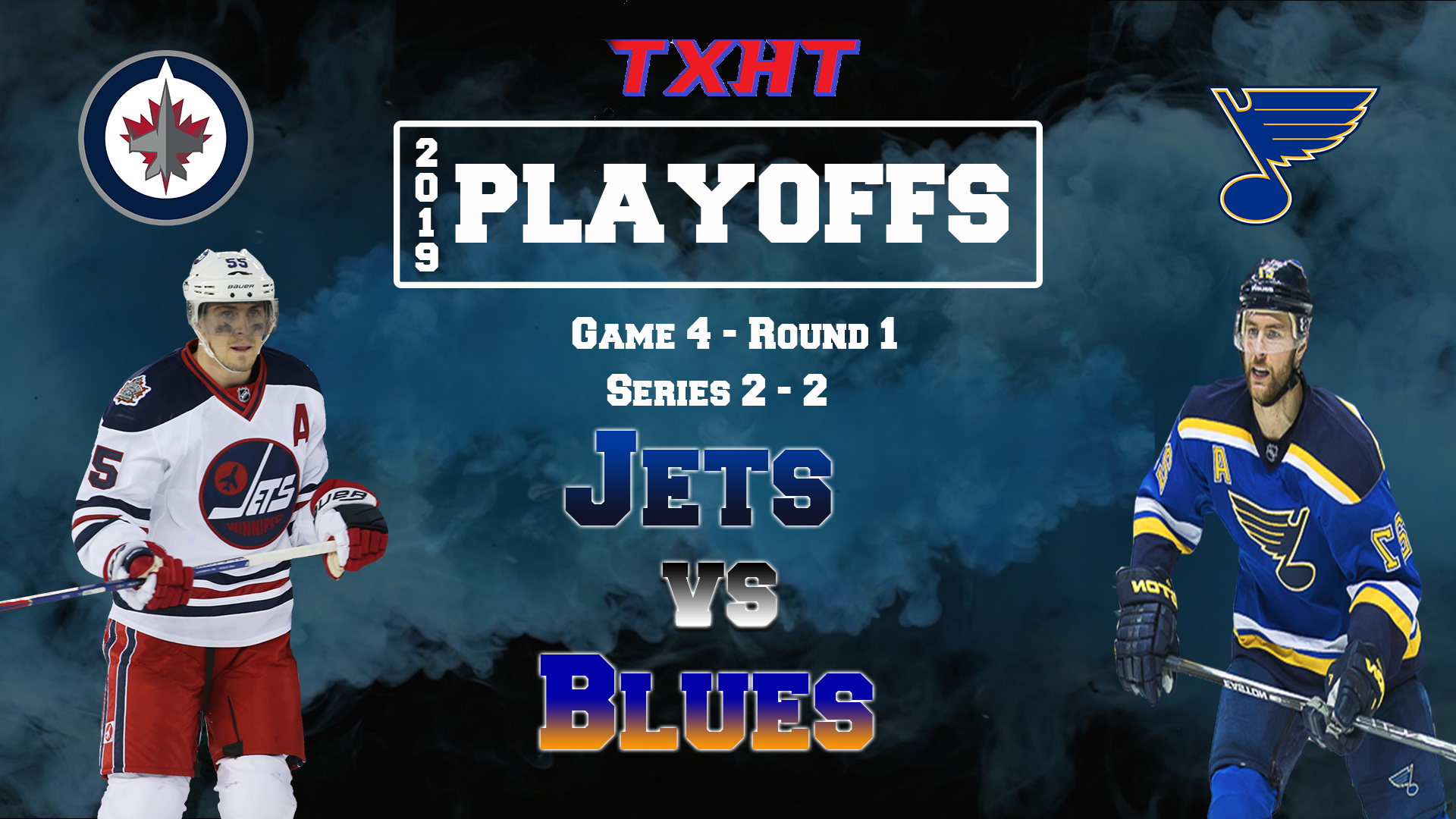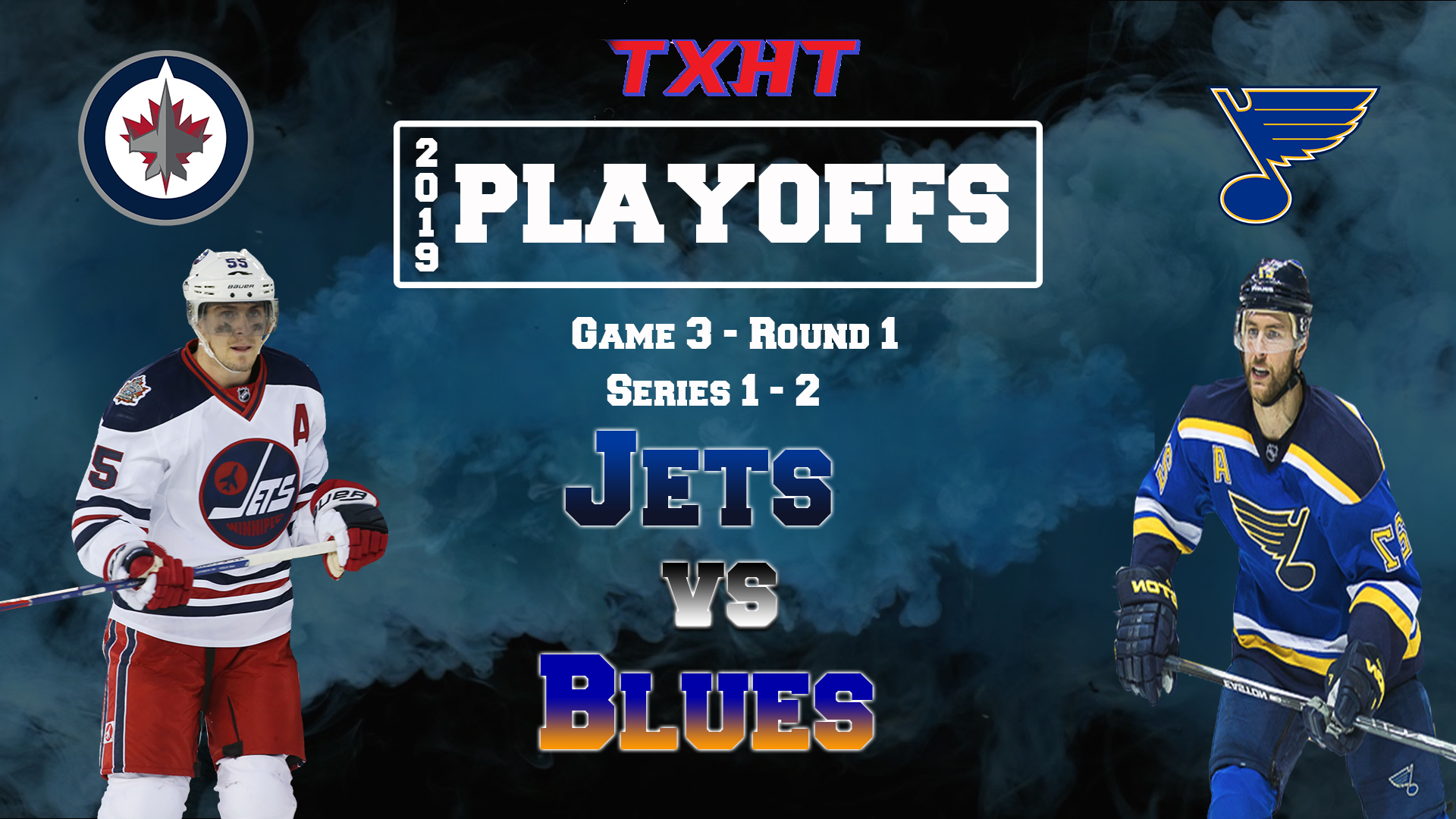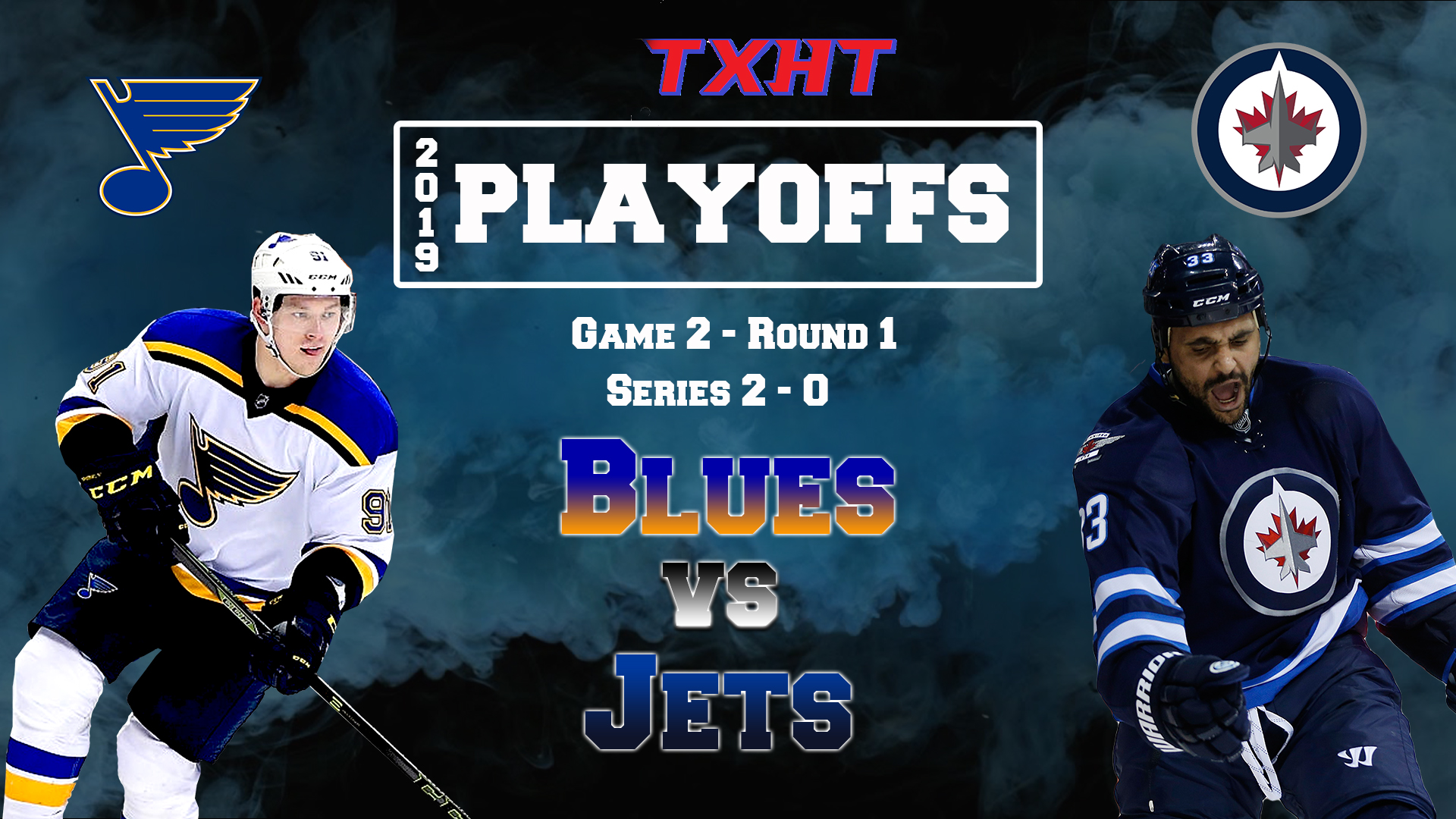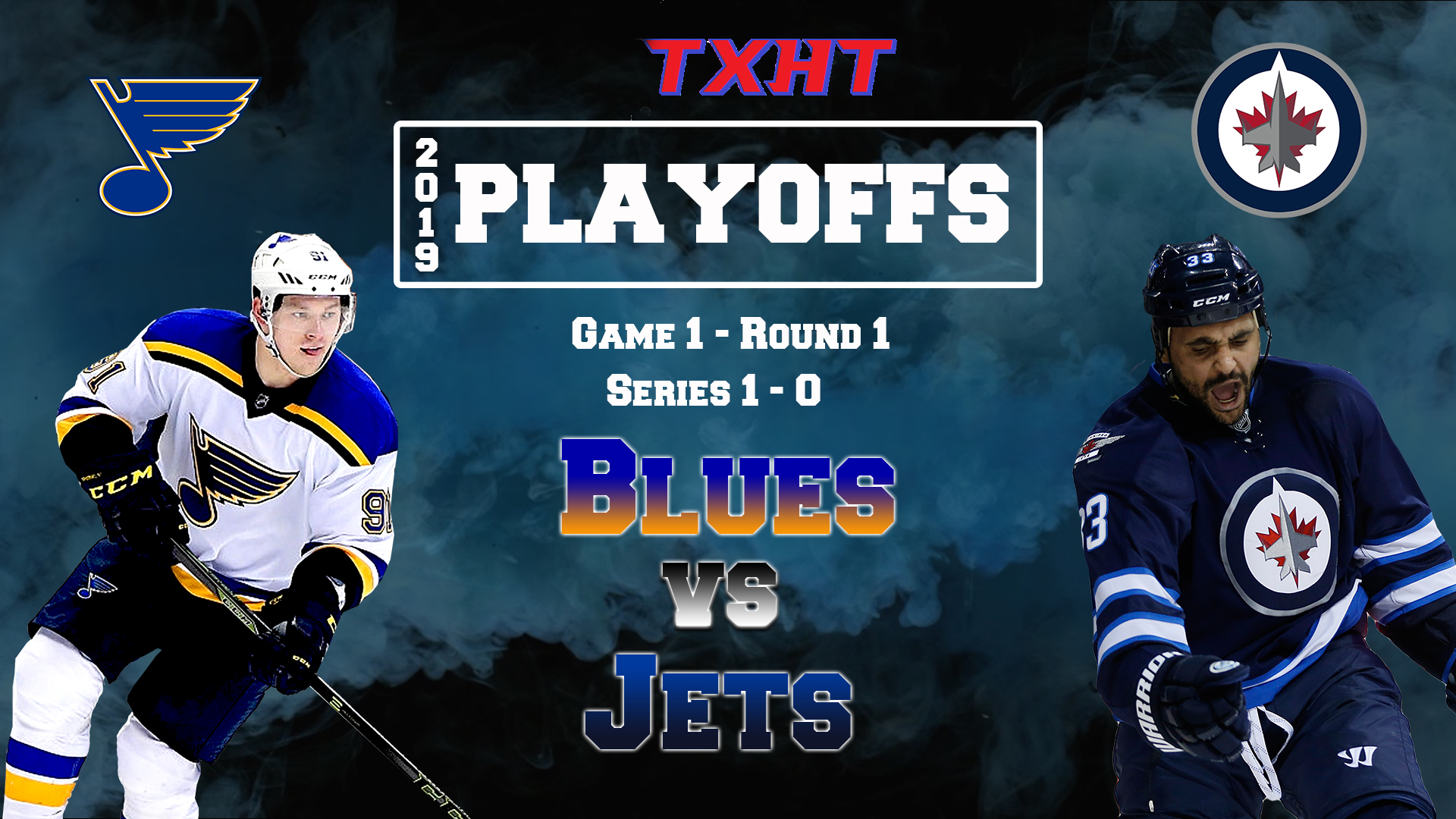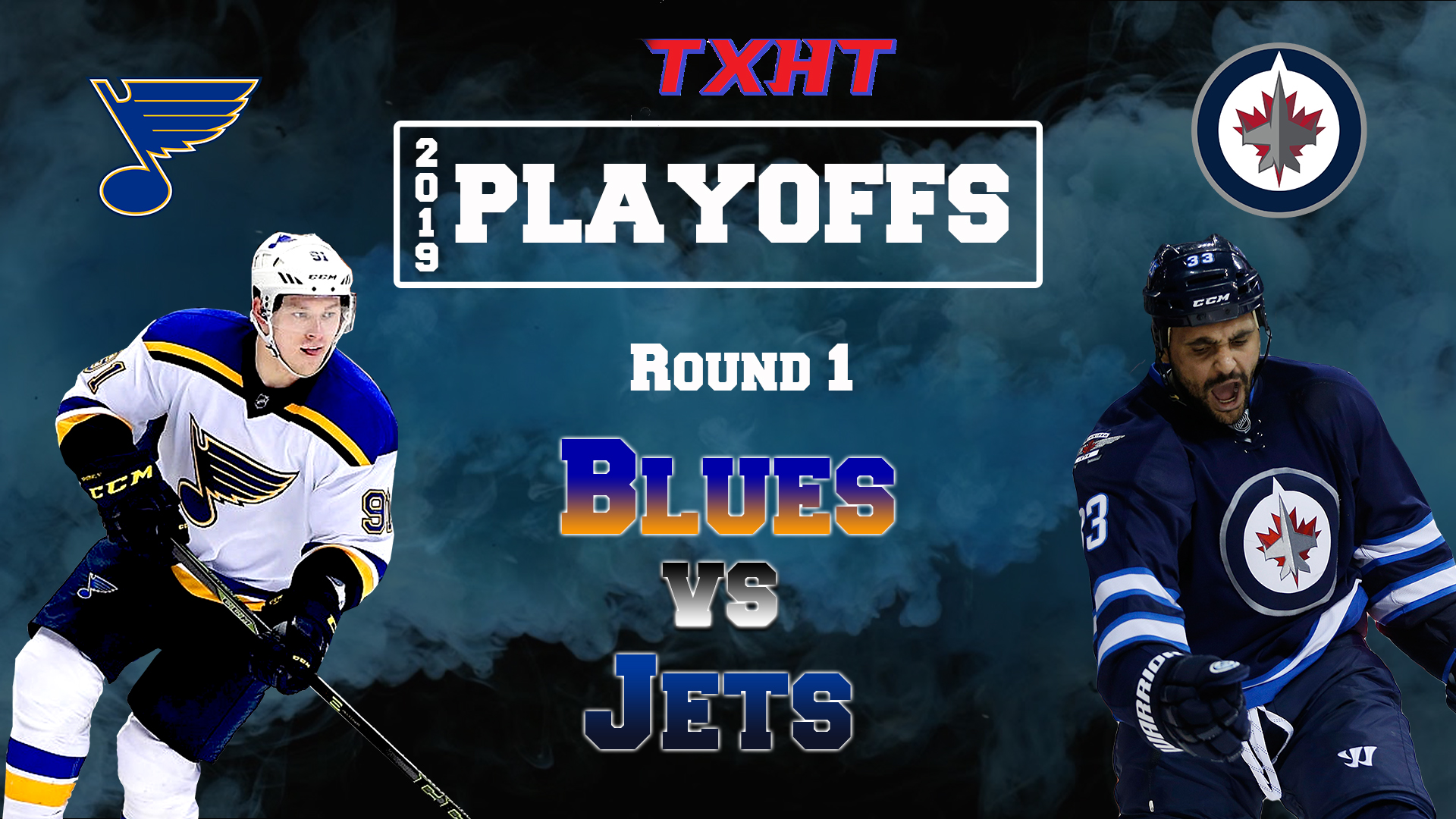🎶 #WeAllBleedBlue pic.twitter.com/tF3O06TWwH
— St. Louis Blues (@StLouisBlues) April 16, 2019
The start of the Winnipeg Jets – St. Louis Blues game was a lot slower and less eventful than that of the first several games, with neither team taking charge or creating a large amount of (quality) chances. The Jets had some opportunities on their first power play, but Jordan Binnington stood tall and kept the game tied at zero, where it stood at the end of the first period. The Blues actually managed to block one of Patrick Laine’s shots.
Take a seat Ehlers. #stlblues pic.twitter.com/TbEY2xHKA8
— St. Louis Blues (@StLouisBlues) April 17, 2019
No score, but a solid start for the boys in blue. #stlblues outshooting Winnipeg 10-5 after 1. #WeAllBleedBlue pic.twitter.com/1eRujJ755Q
— St. Louis Blues (@StLouisBlues) April 17, 2019
The second period was much more wide open, with both teams trading off quality chances. Connor Hellebuyck has kept the Jets in it (as opposed to decidedly keeping them out of it in games 1-2). The Blues played well (except Jaden Schwartz) and it seemed like the Jets were always on their heels.
The boys are BUZZIN at the end of the frame. The #stlblues have 1:29 left on the power play to start the third period. #WeAllBleedBlue pic.twitter.com/m9hYr8V1cv
— St. Louis Blues (@StLouisBlues) April 17, 2019
The Blues opened up the third with a power-play goal by Vladimir Tarasenko, his second in two games (funny what happens when Schwartz and Jori Lehtera aren’t his linemates).
IT'S LOUD IN HERE!!!!!! #stlblues pic.twitter.com/OYgVRUtvud
— St. Louis Blues (@StLouisBlues) April 17, 2019
The Jets fired back just after the seven-minute mark of the third period when Mark Scheifele tipped home a shot to tie the game up at 1 a-piece. Binnington and Helebyuck would stand their ground for the rest of the period and this game would head off to overtime.
TOP CORNER HOCKEY!
🚨: @markscheifele55
🍎: @KyleConnor18
🍏: Blake Wheeler1-1 | #WPGWhiteout | #GoJetsGo | #WPGvsSTL pic.twitter.com/rC0fBBlMwW
— Winnipeg Jets (@NHLJets) April 17, 2019
Buckle up, we're headed to overtime. #WeAllBleedBlue pic.twitter.com/9uA0qWzCIq
— St. Louis Blues (@StLouisBlues) April 17, 2019
Overtime would open up and see some chances at both ends but both goalies stood their ground. Until Mark Scheifele would take the puck up ice and dish it off to Kyle Connor would seal the deal and put the puck into the gaping net. Winnipeg ties the series at 2-2 and sends it back home to Winnipeg for a crucial game 5.
GAME! WINNING! GOAL!
2-1 WPG | #WPGWhiteout | #GoJetsGo | #WPGvsSTL pic.twitter.com/B82Se1y0uW
— Winnipeg Jets (@NHLJets) April 17, 2019
We knew it was going to be a battle, and it's far from over. The fight continues Thursday in Winnipeg. #WeAllBleedBlue pic.twitter.com/zByVtsxmkT
— St. Louis Blues (@StLouisBlues) April 17, 2019
